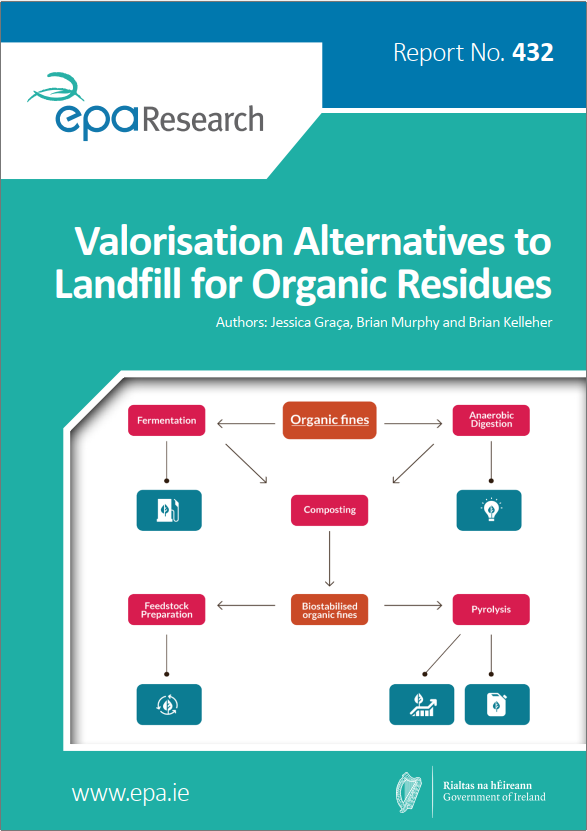Research 432: Valorisation Alternatives to Landfill for Organic Residues
Authors: Jessica Graça, Brian Murphy and Brian Kelleher
Summary: The EPA’s latest data (November 2022) show that municipal waste generation increased by over 440,000 tonnes in the last 5 years, and now amounts to 3.2 million tonnes. The VALOR study looked at how the resource value of the mechanically separated organic fraction of municipal solid waste (MS-OFMSW) can be maximised. The study also characterised the organic fractions of municipal solid waste (MSW).

Identifying Pressures
The EPA’s latest data (November 2022) show that municipal waste generation increased by over 440,000 tonnes in the last 5 years, and now amounts to 3.2 million tonnes. Currently, 16% of municipal waste in Ireland is landfilled, compared with the EU target of a maximum of 10% by 2030. In 2020, Ireland exported an estimated 39% (1.3 million tonnes) of all municipal waste generated.
The VALOR study looked at how the resource value of the mechanically separated organic fraction of municipal solid waste (MS-OFMSW) can be maximised. The study also characterised the organic fractions of municipal solid waste (MSW).
The VALOR study addresses the critical need to minimise landfilling and develop the beneficial use of the organic fraction of MSW, to formulate strategies to retain materials within a circular economy and to reduce demand for virgin raw materials.
Informing Policy
The key policy and regulatory recommendations from the VALOR study are:
- Promote and use the 0–10 mm subfraction of bio-stabilised residual waste (BSRW), commonly referred to as compost-like output (CLO), subject to additional screening for impurities, as a soil improver for remediation, non-agriculture production and soil restoration.
- Adopt the oxygen uptake rate limit of 25 mmol O2/kg organic matter/hour in the EU Fertiliser Regulation (EU 2019/1009, Component Material Category 3 (Compost)) as the stability reference for 0–10 mm CLO destined for use as a soil improver.
- Recognise the carbon benefit of using CLO as a soil improver.
- Promote glass recycling at household/commercial level to reduce the impurity content of BSRW and MS-OFMSW.
- Support the development of anaerobic digestion infrastructure for MS-OFMSW and fund studies to provide better information about pre-treatment options and fuel products.
- Use the BSRW 10–40 mm fraction for pyrolysis treatment, energy generation and added-value products, such as biochar.
Clarity around policy and support for feasible waste treatment processes will enable sustainable industry, improve recycling rates and deliver circular economy benefits.
Developing Solutions
The VALOR study investigated and assessed potential recovery processes for the mechanically separated fractions of MSW. The unique findings of this project included the following:
- Sampling and characterisation of MS-OFMSW and BSRW provided information on their physical and chemical compositions in Ireland.
- Bioethanol from MS-OFMSW has potential as a biofuel but faces a number of practical barriers; biodiesel from BRSW is constrained by a relatively low-fat content.
- Anaerobic digestion of MS-OFMSW to produce biomethane and biogas is possible, but the digestate is unlikely to be used as a fertiliser.
Feasible opportunities for adding value to the organic fraction of MSW include using it as a soil improver. Studies show that BSRW assists with land restoration, produces grass of similar quality to that of agricultural grasslands and assists carbon sequestration in degraded soils.
Trials of soil restoration of bauxite residue deposits show that controlled fractions of BSRW are beneficial as a soil amendment and have effects comparable to those of commercial compost.
https://www.epa.ie/media/epa-2020/research/research-publications/Report-Cover-Image-432.png